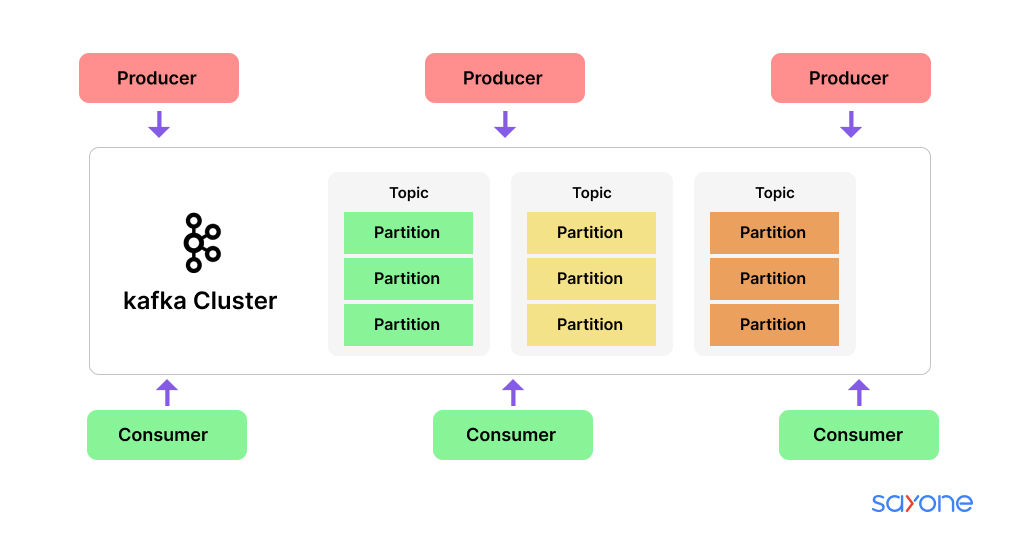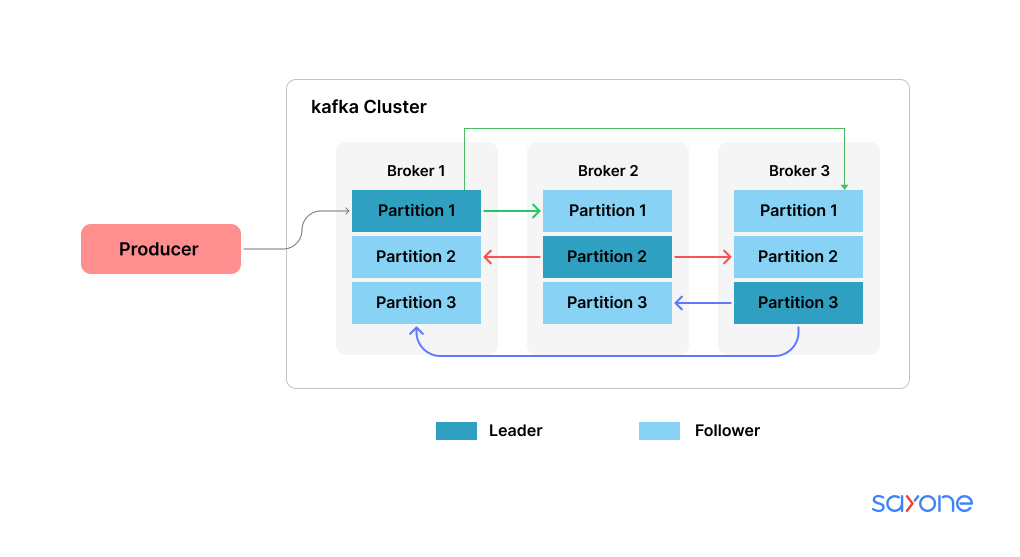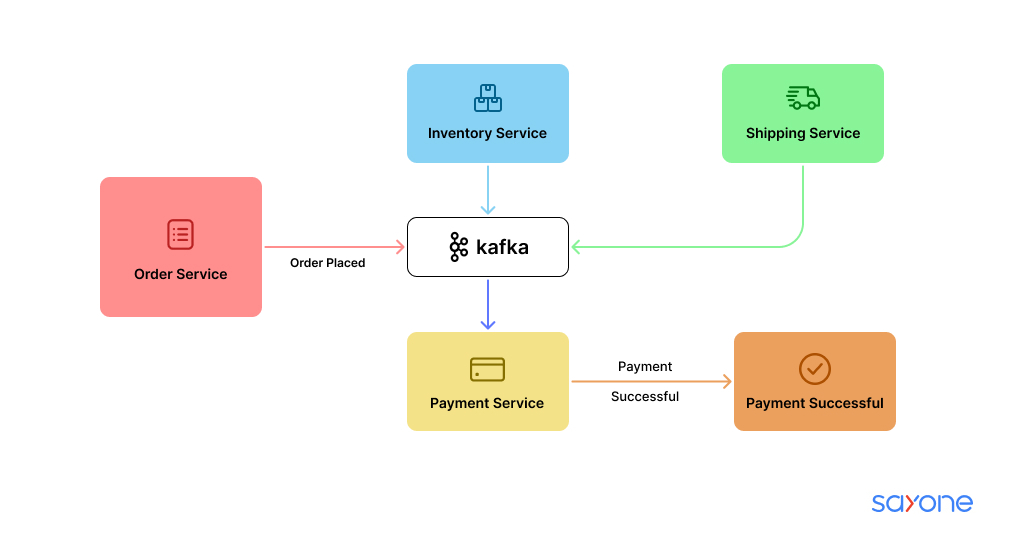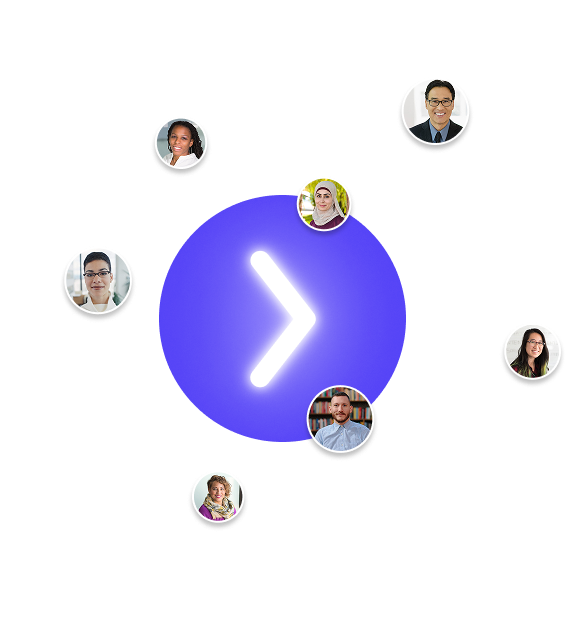
Subscribe to our Blog
We're committed to your privacy. SayOne uses the information you provide to us to contact you about our relevant content, products, and services. check out our privacy policy.

Jibu JamesJuly 21, 20256 min read

Generating table of contents...
Many businesses find their monolithic applications can't handle the constant flow of modern data. This issue often creates system-wide bottlenecks, which is why most modern enterprises have already moved to a microservices approach, breaking down complex applications into smaller, independent services.
As an entrepreneur, you need technology that grows with your vision. With the average enterprise using well over a thousand cloud services, making sure they all communicate properly is a major challenge.
How do you prevent this interconnected system from becoming inefficient?
This is where an event-driven setup using Apache Kafka provides an answer. Kafka works as a central messaging system for your services, letting them communicate on their own.
This separation means individual services can be updated or fail without bringing down the entire system, making it highly reliable and able to handle more users or data. It is built to process large amounts of data in real-time, keeping your business responsive and ready for change.
Let's see how you can set up Kafka as the foundation for your microservices.
Apache Kafka is a platform built to help businesses manage and move large amounts of real-time data between various systems. It works as a central information hub for your applications, allowing information to be shared across departments without direct connections.
Kafka uses a publish-subscribe method systems called producers send data records (events) to organized feeds known as topics for example, a topic might handle "new orders" or "customer updates."
 Other systems, called consumers, access these topics whenever they need the information. Kafka operates through a group of servers (brokers) that keep data secure and maintain the order in which it arrives.
Other systems, called consumers, access these topics whenever they need the information. Kafka operates through a group of servers (brokers) that keep data secure and maintain the order in which it arrives.
This setup separates your systems, so your sales, inventory, and analytics tools can all respond to events at the same time, without communicating directly.
When building applications with a microservices architecture, setting up reliable communication between services is a primary challenge.
Kafka serves as a central messaging platform, allowing services to interact asynchronously and avoid tangled dependencies.
This setup gives you a system where both Kafka and services can grow on their own, supporting real-time, event-driven responses to business activities.
At SayOne, we see Kafka as the central part that connects microservices, turning scattered components into a unified, event-driven system. By linking services through real-time data streams, businesses gain the adaptability and strength needed to grow without limits and respond instantly to every opportunity that arises.
As your company expands, technology must keep pace, especially during high-traffic periods like holiday sales or major promotions. Systems that falter under heavy load can lead to lost sales and unhappy customers.
Kafka addresses this by distributing data across multiple servers, ensuring your operations continue without interruption even as transaction volumes rise.
This structure means your business can confidently handle spikes in demand, new product launches, or expanding customer bases without worrying about technology limitations.

Multiple servers work together, dividing data into partitions and replicating information across the cluster.
This setup allows for scaling as needed and ensures that operations remain reliable, even during hardware failures or traffic surges. The architecture enables parallel data processing and maintains service continuity, supporting uninterrupted business growth.
Unexpected system failures can disrupt operations and erode customer trust. As a business owner, you need technology that keeps services running even if parts of your system encounter problems.
Kafka achieves this by decoupling services using fault tolerance methods if one fails, others keep working, and Kafka holds messages until the affected service recovers.
For example, BigCommerce processes over 1.6 billion messages daily using Kafka, supporting real-time analytics, fraud detection, and personalized recommendations. This demonstrates Kafka’s ability to maintain service continuity and data integrity at scale.
Relying on outdated information can lead to missed opportunities and slow responses to market shifts. Kafka provides access to data as it’s created, enabling immediate insights into customer behavior, inventory levels, and sales trends.
With this real-time data flow, businesses can react quickly adjusting marketing campaigns or inventory management on the fly.
By continuously feeding data into analytics and operational tools, Kafka helps you stay ahead of competitors and meet customer expectations promptly.
Staying ahead in business requires the ability to adjust and introduce new ideas quickly. Kafka’s event-driven approach of architecture allows your teams to try new features, connect with emerging technologies, and launch updates without disrupting existing services.
By separating systems, you can add or modify microservices as needed, supporting rapid development cycles and new business models. This adaptability encourages creative problem-solving and lets your business respond quickly to changing market demands.
Consider a customer placing an order on your online store. Instead of services calling each other directly, the Order Service publishes an "Order Placed" event to a Kafka topic.
Both the Inventory and Payment Services subscribe to this topic, receiving the event at the same time and acting independently updating stock and processing payment.

Once payment is confirmed, the Payment Service publishes a "Payment Successful" event, which the Shipping Service consumes to start the delivery process. Each service operates independently, ensuring the system remains scalable and resilient. If the Shipping Service is temporarily unavailable, other services continue unaffected, and no data is lost.
Is moving your monolithic system to a scalable, event-driven architecture a challenge? The complexity of integrating technologies like Kafka can be difficult.
At SayOne, we specialize in designing and building microservices aligned with your business's future goals.
Our expert team excels at rebuilding complex systems into adaptable solutions, ensuring a straightforward and cost-effective development process.
Let us handle the technical details while you focus on your business growth. Connect with SayOne today.

We're committed to your privacy. SayOne uses the information you provide to us to contact you about our relevant content, products, and services. check out our privacy policy.

About Author
Jibu James is the Team Lead at SayOne Technologies. He is passionate about all things related to reading and writing. Check out his website or say Hi on LinkedIn.

We collaborate with visionary leaders on projects that focus on quality